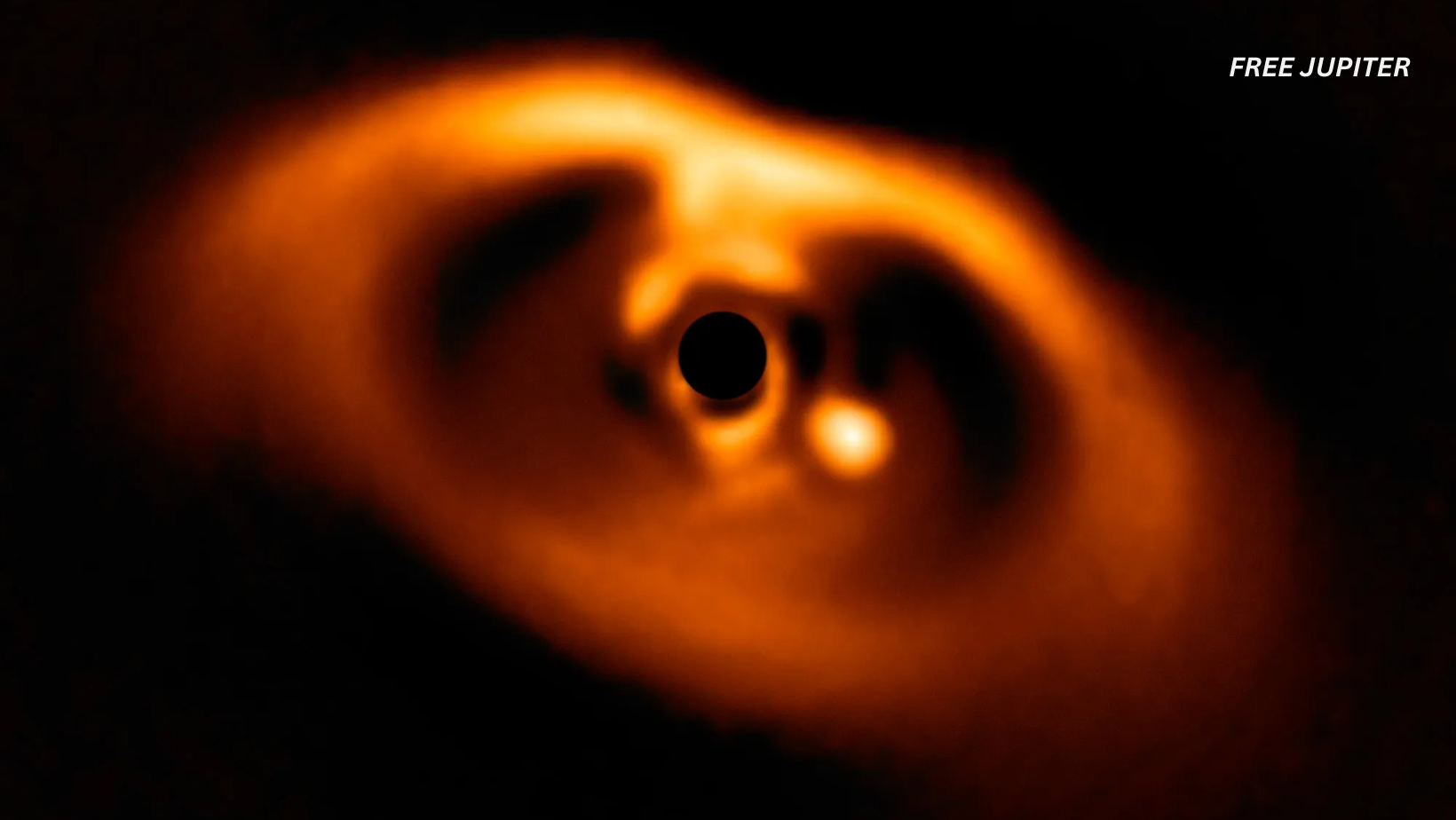Friendly Note: FreeJupiter.com shares general info for curious minds 🌟 Please fact-check all claims—and always check health matters with a professional 💙
Imagine being able to peek into a cosmic delivery room and watch the birth of an entirely new solar system—planets forming, dust swirling, and stars waking up. Thanks to the James Webb Space Telescope and the ALMA observatory in Chile, that’s exactly what astronomers have just done. And it’s not just fascinating—it’s a first in human history.
This discovery gives us a front-row seat to one of the most elusive mysteries in space: how planets like Earth come to be. Scientists captured something no one has ever seen this early before—the literal beginning stages of planet formation, unfolding in real time, around a very young star named HOPS-315.
🍼 Cosmic Infancy: What Exactly Are We Looking At?
At the center of this planetary nursery lies HOPS-315, a baby star located about 1,370 light-years away in the Orion constellation—a well-known part of the night sky shaped like a mythical hunter. Even though it’s still in its cosmic infancy, HOPS-315 is already showing signs of being a solar system architect.
This star is surrounded by what scientists call a protoplanetary disk—a hot, rotating mix of gas and dust. Think of it as a massive pancake-shaped cloud that’s spinning around the star like water circling a drain. Inside this dusty cloud, the ingredients of new worlds are coming together.
While astronomers have seen other planetary systems mid-formation before, those were further along—like catching a toddler already walking. What they’ve now spotted is more like the cosmic equivalent of the very first cells of an embryo, just beginning to arrange themselves.
🧱 The Building Blocks of Worlds
Here’s where it gets really interesting. Using Webb’s powerful infrared sensors and ALMA’s precise radio-wave eyes, scientists found the actual building materials that rocky planets like Earth are made from:
Let’s break that down.
Silicon monoxide is a chemical compound that includes silicon, one of the most abundant elements in Earth’s crust (you’ll find it in sand and glass). Crystalline silicates are minerals with a repeating, ordered structure—essentially sparkly space dust.
These two materials are crucial because they’re known to have played a starring role in the formation of our own solar system. On Earth, and in the rocks that orbit our Sun, these minerals are common. Their presence around HOPS-315 means that a similar process could be playing out in this distant region of space.
Over millions of years, these small mineral grains collide, stick together, and gradually snowball into planetesimals—small planetary embryos. Some of these might remain small forever (like asteroids), while others will grow into full-fledged planets.
🪐 Location, Location, Location: A Familiar Formation Zone
So where in the HOPS-315 system is all this action happening?
Well, the mineral signals were traced back to a location about 2.2 astronomical units (AU) from the star. One AU is the distance between the Earth and the Sun—so this formation zone is more than twice that far out.
That might sound far, but it happens to be roughly the same distance as our solar system’s asteroid belt, the zone between Mars and Jupiter. In our own system, this region is full of leftover materials from the planet-forming years—chunks of rock and metal that never quite made it into a planet.
That’s no coincidence. Scientists believe that asteroids are remnants of the same process they’re now seeing in HOPS-315. In fact, the very same silicon monoxide and crystalline silicates found in those ancient asteroids are also what Webb and ALMA just detected around HOPS-315.
So, in a sense, we’re seeing a mirror—a younger version of what happened right here, billions of years ago.
🌠 How Did Scientists Even See This?
Let’s pause for a second: how do you actually see a baby planet forming?
It’s not easy. The regions around young stars are often chaotic and obscured by thick clouds of gas, which can interfere with the types of light astronomers need to detect tiny mineral grains. To complicate matters, young stars like HOPS-315 often shoot out powerful outflows—jets of high-energy material that can block a clear view of the disk.
But here’s where luck stepped in.
The protoplanetary disk around HOPS-315 just so happens to be tilted at the perfect angle, allowing astronomers to look directly into it without too much interference from the star’s energetic outflows. This lucky orientation gave both James Webb and ALMA an open window into the disk’s contents.
Webb was the first to spot the telltale signs of those crucial minerals in the infrared. But it couldn’t tell exactly where the materials were located. That’s where ALMA came in. With its ability to trace specific molecules using radio waves, ALMA zeroed in on the exact location of the mineral emissions.
Read more: Broccoli Isn’t Actually Natural—It Was Engineered by Humans Over Many Centuries
🌍 Are We Special, or Just One of Many?
One of the biggest questions in astronomy is this: Is our solar system one of a kind?
We know how our planetary family turned out—rocky planets like Earth closer to the Sun, gas giants farther out, and a dusty asteroid belt in between. But is this a universal blueprint, or just a happy accident?
Discoveries like HOPS-315 suggest we might not be so unique after all.
Seeing the same kinds of materials forming in the same kinds of locations tells scientists that other systems may be developing in much the same way. But one example isn’t enough to prove a pattern. To know for sure, astronomers will need to find many more systems at this same stage.
That’s where James Webb and ALMA come in again. These space-based and ground-based observatories will continue scanning the skies, hoping to catch other baby solar systems in action. Over time, they might gather enough evidence to say whether planetary formation follows a recipe—or if our Earth and its siblings were the result of cosmic luck.
Read more: NASA Has Just Captured the Closest Images of the Sun Ever Taken
⏳ A Glimpse Into the Past—and the Future
In a way, observing HOPS-315 is like turning back the clock. It’s a time machine view into the dawn of a solar system. But it’s also a telescope into the future—because some of those swirling mineral grains might one day become new planets, possibly even with their own moons, oceans, or life.
We won’t be around to see how it all turns out. Planet-building is a slow, patient process that unfolds over millions or even billions of years. But for now, humanity has done something extraordinary: we’ve caught the universe in the act of creation.
And it’s just getting started.










